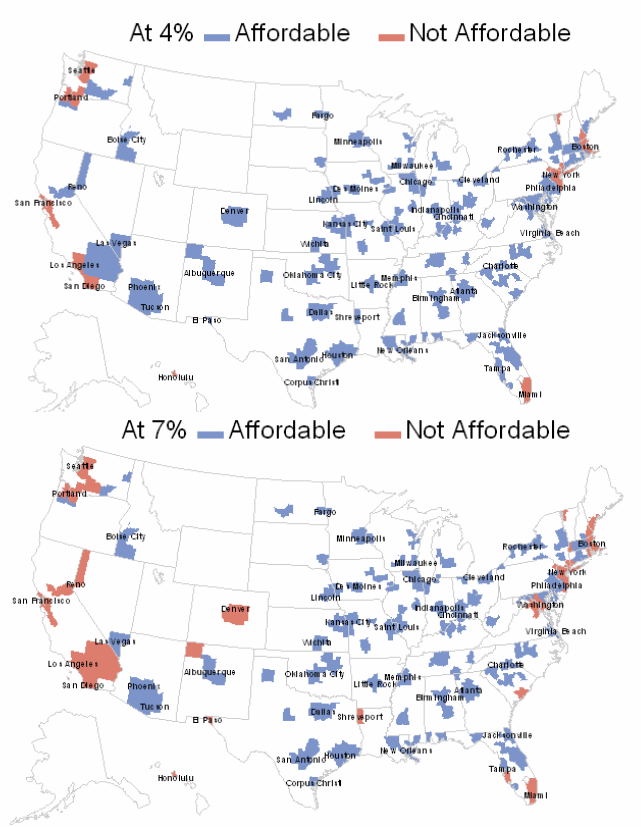Mortgage rates have risen sharply over the last month and Freddie Mac, in its monthly Economic and Housing Market Outlook for June, focuses on what happens to the housing market recovery if those increases continue. Recent movements have raised rates from the 3.5 percent range where they have been for most of 2013 to just over 4.0 percent.
While many market participants are concerned about the impact of higher rates on the economy and the chance that Fed tapering could take them higher, Freddie's research suggests moderately higher rates are livable, even if they have some downside risks. Whether intentional or not, the tacit implication is that the economy may well be able to endure QE3 tapering.
According to Freddie Mac's Office of the Chief Economist, low rates have helped fuel the recent good news in housing where home prices have been rising in most areas of the country. While it is true, the report says, that prices and rates work together to drive up the cost of buying homes, rates remain at near 60-year lows. At today's home prices and income levels, mortgage rates would have to reach 7 percent before the median priced home would be unaffordable to families making the median income in most parts of the country.
However Freddie Mac says, in some areas of the country affordable homes are already out of reach of a typical family. It cites Los Angeles as an area where families are already falling short at 4 percent interest rates and Riverside, Denver, and Washington DC as metro areas where 5 percent rates would leave a lot of typical families on the wrong side of affordability.
Certain high cost areas aside, most parts of the country have high affordability and can absorb a further increase in rates before housing activity should slow substantially. Rather rising rates will have only a small, slowing effect on the home purchase market. The capital markets are signaling that rates are likely to move gradually higher in the coming year and this may spur renters and other first-time homebuyers with the financial capacity to get off the fence and buy before costs rise higher.
However, the economists say we can expect refinancing to fall quickly and sharply. The Bureau of Economic Analysis reports that in the first quarter the average effective interest rate on mortgages was 4.7 percent, less than one percentage point above Freddie Mac's 30-year fixed-rate mortgage in June. History shows that a gap of 0.5 percentage points implies a refinance share of about 50 percent. HARP will keep levels a bit higher than historical averages but refinancing will still fall.
Freddie Mac projects that rising interest rates could have the following effect on the affordability of Top 30 U.S. Metro Markets.








